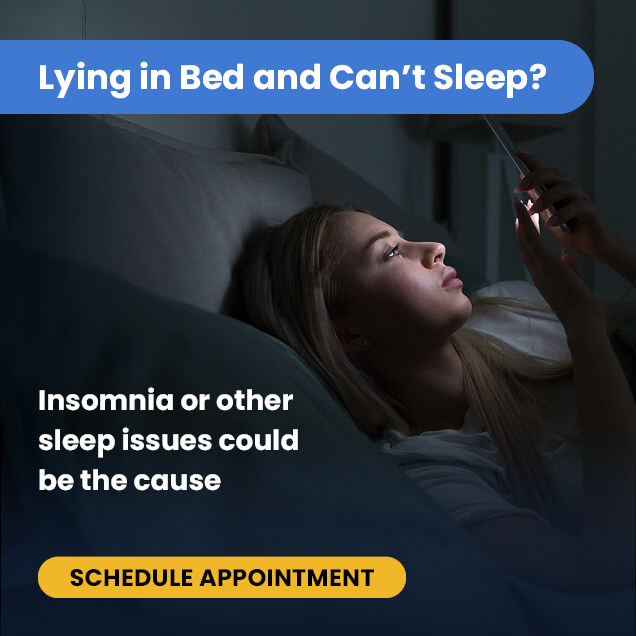What Is REM Sleep? | What Happens During REM Sleep? | Why Is REM Sleep Important? | How Can REM Sleep Help the Brain Develop? | How Much REM Sleep Do We Need?
Overview
People spend around one-third of their lives asleep. That’s why scientists dedicate so much research to understanding what happens during sleep and how it affects our overall health and daily lives.
Since the 1950s, the rapid eye movement (REM) sleep stage has caught the attention of researchers and the public alike because of its association with vivid dreams.
Some years before the discovery of REM sleep, Freud suggested that dreams are “the royal road to the unconscious” and theorized that dream analysis could give us insights into the inner emotional workings of the mind.
However, REM sleep also has a significant role in brain development, memory consolidation, emotional memory, and preparation for wakefulness. The time you spend in REM sleep decreases as you get older and may vary depending on your body’s daily needs.
Keep reading to learn more about REM sleep, its importance, and how much of it you need.
What Is REM Sleep?
Rapid eye movement (REM) sleep is a stage of sleep associated with dreaming and memory processing.[1] It’s also known as ‘active sleep,’ paradoxical sleep,’ and ‘dream sleep’.
In the 1950s, scientists studying brain activity during sleep in infants noticed that their eyes moved rapidly from side to side during distinct sleep periods.[2] That’s how REM sleep got its name.
Years later, scientists showed that rapid eye movements in human adults were associated with specific brain-wave patterns and that dreaming occurred during sleep with rapid eye movement.[3]
When you go to sleep, your body cycles between two phases of sleep: non-REM (non-rapid eye movement) sleep and REM (rapid eye movement) sleep.[4]
Your body goes through 4-6 sleep cycles, each lasting around 90-120 minutes. In each sleep cycle, non-REM (deep sleep) happens first over three stages (N1-N3).
Then you get one REM stage that lasts for around 10 minutes during the first cycle and starts to last longer with every sleep cycle. So, the longer you sleep, the more time you spend in REM sleep and less time in deep (non-REM) sleep.
What Happens During REM Sleep?
Characteristics of rapid eye movement sleep include the following:[4]
- Brain Waves during REM sleep (beta waves) are like those during wakefulness
- Sleeping during REM is lighter than during non-REM
- Your brain activity increases during REM, and you can have vivid dreams
- You lose muscle tone and cannot move your arms or legs
- Your breathing quickens and becomes more irregular
- Your heart rate and blood pressure increase
- People tend to wake up spontaneously in the morning during an episode of REM sleep
Why Is REM Sleep Important?
All stages of sleep are vital. But scientists have debated the importance of REM sleep and its functional roles for decades since its discovery in 1953. Here’s what we know so far about the biological and physiological functions of REM sleep.
1) Dreams
Although many people think you can only dream during REM sleep, that’s a misconception. You can also dream during non-REM sleep.[5] However, dreams you have during REM sleep are usually more vivid because of the increased brain activity during that stage.
2) Brain Development
Researchers suggest REM sleep is essential for brain development and maturation.[6] This hypothesis came from the observation that most newborns spend most of their early lives in a REM sleep-like state known as active sleep.[7]
Additionally, mammals born with immature and underdeveloped brains (human babies, kittens, puppies) spend more time in REM sleep than those with more developed brains (horses, sheep, cows).[8]
How Can REM Sleep Help the Brain Develop?
Scientists report that newborn mammals can experience tens of thousands of muscle twitches during REM sleep each day.[9] Multiple brain regions become activated by these muscle twitches during REM sleep. Scientists suggest that these REM-specific muscle twitches can engage brain development and help with motor earning, which is relatively underdeveloped in these mammals at birth.[10]
1) Memory Processing and Consolidation
Sleeping is essential for processing, forming, maintaining, and deleting memories.[11] During sleep, your brain does the following:
- It processes the information and skills it learned during the day
- It forms memories out of the day’s experiences and learnings
- It maintains previous memories
- It decides which information or memories to delete
Memory consolidation is the process by which the brain transforms a temporary memory into a more stable, long-lasting one. Some memory consolidation occurs during non-REM deep sleep, and some during REM sleep.
Researchers found evidence that REM sleep is crucial for processing and forming memories that help you remember new objects and places.[12]
2) Processing Emotions
Scientists believe that REM sleep helps your brain process and regulate emotions.[13] Studies show that the disruption of REM sleep makes it harder to process emotions experienced before sleep.[14]
Moreover, changes in REM sleep can contribute to post-traumatic stress disorder (PTSD) development following a traumatic experience.[15] That may be because the part of your brain responsible for processing emotional signals and forming emotional memories (the amygdala) becomes activated during REM sleep.[16]
3) Preparing You to Wake Up
Emerging evidence suggests that the REM stage of sleep prepares your body to wake up by activating your central nervous system.
This idea is supported by the fact that people usually wake up in the morning immediately after a REM sleep period.[17]
That may explain why we spend more time in REM sleep the longer we sleep. The longer the REM sleep duration, the more likely we’ll wake up.
How Much REM Sleep Do We Need?
The short answer is that there isn’t any consensus on how much daily REM sleep you need.
Newborns and infants need the most REM sleep because their brains are still developing. Newborn babies sleep around 16-18 hours a day and spend half of that time (about 8 hours), sometimes more, in REM sleep.[18]
As you get older, you start spending less time in REM sleep. Most healthy adults should sleep for 7-9 hours each night. About 75-80 percent of that time is spent in non-REM sleep, and the remaining 20-25 percent is in REM sleep.[19] Therefore, most adults need around 1.5-2 hours of REM sleep each night to stay healthy.
With that said, your body changes the amount of sleep you need according to your physiological needs. Therefore, the duration of non-REM and REM sleep may vary from night to night, depending on your body’s needs.
For example, studies show that your body may need more REM sleep when you learn a lot of new information.[20] The extra sleep will help you retain the information in your memory.
Furthermore, researchers found that students who napped between two tests remembered information more accurately during the tests. Additionally, the longer they spent in REM sleep, the higher their working memory accuracy.[21]
Consequently, although around two hours of REM sleep per day seems healthy for most adults, there may be days when you need more than that to be on top of your game.
References:
- Peever, J., & Fuller, P. M. (2016). Neuroscience: A Distributed Neural Network Controls REM Sleep. Current biology : CB, 26(1), R34–R35. https://doi.org/10.1016/j.cub.2015.11.011
- DEMENT, W., & KLEITMAN, N. (1957). Cyclic variations in EEG during sleep and their relation to eye movements, body motility, and dreaming. Electroencephalography and clinical neurophysiology, 9(4), 673–690. https://doi.org/10.1016/0013-4694(57)90088-3
- ASERINSKY, E., & KLEITMAN, N. (1953). Regularly occurring periods of eye motility, and concomitant phenomena, during sleep. Science (New York, N.Y.), 118(3062), 273–274. https://doi.org/10.1126/science.118.3062.273
- Patel AK, Reddy V, Shumway KR, Araujo JF. Physiology, Sleep Stages. StatPearls Publishing; 2022. Accessed March 8, 2023. https://www.ncbi.nlm.nih.gov/books/NBK526132/
- Siclari, F., Bernardi, G., Cataldi, J., & Tononi, G. (2018). Dreaming in NREM Sleep: A High-Density EEG Study of Slow Waves and Spindles. The Journal of neuroscience : the official journal of the Society for Neuroscience, 38(43), 9175–9185. https://doi.org/10.1523/JNEUROSCI.0855-18.2018
- Marks, G. A., Shaffery, J. P., Oksenberg, A., Speciale, S. G., & Roffwarg, H. P. (1995). A functional role for REM sleep in brain maturation. Behavioural brain research, 69(1-2), 1–11. https://doi.org/10.1016/0166-4328(95)00018-o
- Blumberg M, Freeman J, Robinson S. Oxford Handbook of Developmental Behavioral Neuroscience. Oxford University Press; 2009.
- Frank, M. G., & Heller, H. C. (1997). Development of REM and slow wave sleep in the rat. The American journal of physiology, 272(6 Pt 2), R1792–R1799. https://doi.org/10.1152/ajpregu.1997.272.6.R1792
- Karlsson, K. A., Gall, A. J., Mohns, E. J., Seelke, A. M., & Blumberg, M. S. (2005). The neural substrates of infant sleep in rats. PLoS biology, 3(5), e143. https://doi.org/10.1371/journal.pbio.0030143
- Blumberg, M. S., Coleman, C. M., Gerth, A. I., & McMurray, B. (2013). Spatiotemporal structure of REM sleep twitching reveals developmental origins of motor synergies. Current biology : CB, 23(21), 2100–2109. https://doi.org/10.1016/j.cub.2013.08.055
- Diekelmann, S., & Born, J. (2010). The memory function of sleep. Nature reviews. Neuroscience, 11(2), 114–126. https://doi.org/10.1038/nrn2762
- Boyce, R., Glasgow, S. D., Williams, S., & Adamantidis, A. (2016). Causal evidence for the role of REM sleep theta rhythm in contextual memory consolidation. Science (New York, N.Y.), 352(6287), 812–816. https://doi.org/10.1126/science.aad5252
- Miller, K. E., & Gehrman, P. R. (2019). REM Sleep: What Is It Good For?. Current biology : CB, 29(16), R806–R807. https://doi.org/10.1016/j.cub.2019.06.074
- Groch, S., Zinke, K., Wilhelm, I., & Born, J. (2015). Dissociating the contributions of slow-wave sleep and rapid eye movement sleep to emotional item and source memory. Neurobiology of learning and memory, 122, 122–130. https://doi.org/10.1016/j.nlm.2014.08.013
- Spoormaker, V. I., & Montgomery, P. (2008). Disturbed sleep in post-traumatic stress disorder: secondary symptom or core feature?. Sleep medicine reviews, 12(3), 169–184. https://doi.org/10.1016/j.smrv.2007.08.008
- Corsi-Cabrera, M., Velasco, F., Del Río-Portilla, Y., Armony, J. L., Trejo-Martínez, D., Guevara, M. A., & Velasco, A. L. (2016). Human amygdala activation during rapid eye movements of rapid eye movement sleep: an intracranial study. Journal of sleep research, 25(5), 576–582. https://doi.org/10.1111/jsr.12415
- Benington, J. H., & Heller, H. C. (1994). REM-sleep timing is controlled homeostatically by accumulation of REM-sleep propensity in non-REM sleep. The American journal of physiology, 266(6 Pt 2), R1992–R2000. https://doi.org/10.1152/ajpregu.1994.266.6.R1992
- Grigg-Damberger, M. M., & Wolfe, K. M. (2017). Infants Sleep for Brain. Journal of clinical sleep medicine : JCSM : official publication of the American Academy of Sleep Medicine, 13(11), 1233–1234. https://doi.org/10.5664/jcsm.6786
- Colten HR, Altevogt BM, Research I of M (US) C on SM and. Sleep Physiology. National Academies Press (US); 2006. Accessed March 8, 2023. https://www.ncbi.nlm.nih.gov/books/NBK19956/
- Rasch, B., & Born, J. (2013). About sleep’s role in memory. Physiological reviews, 93(2), 681–766. https://doi.org/10.1152/physrev.00032.2012
- Lau, E. Y., Wong, M. L., Lau, K. N., Hui, F. W., & Tseng, C. H. (2015). Rapid-Eye-Movement-Sleep (REM) Associated Enhancement of Working Memory Performance after a Daytime Nap. PloS one, 10(5), e0125752. https://doi.org/10.1371/journal.pone.0125752






